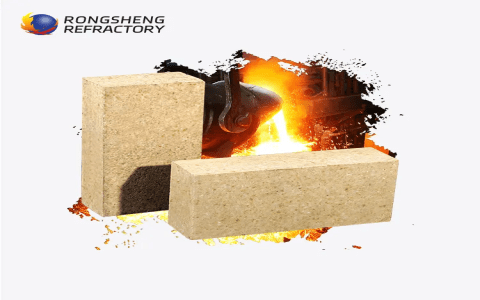Well now, let me tell ya something about these kiln refractory bricks. They ain’t like the regular bricks you see in them houses or walls. No sir, these ones are special, used for things like kilns, furnaces, and them big ovens that need to handle all that heat. They got a tough job, ya see. They gotta stand up to them high temperatures without falling apart, and that’s no easy task, I tell ya.
Now, these refractory bricks are made from materials that can take a lot of heat. Regular bricks, they might crack and crumble if they get too hot, but these ones, well, they just keep on going. Mostly, they’re made up of a mix of alumina and silica. You’ll find ‘bout 25 to 30% alumina in ‘em and a whole lotta silica, up to 70%! That’s what makes ‘em so heat resistant, ya know. They get that white or yellowish color, which is a sign of their strength, just like them tough old folks who been through it all.


So, you’re probably wonderin’, where do these bricks get used? Well, let me tell ya, they got a big job in places like cement factories, where they line the insides of them rotary kilns. These rotary kilns, they spin around and get real hot, ya see, up to 1,000 degrees Celsius sometimes! And if the bricks inside ain’t strong enough, the whole thing could fall apart. That’s why they use them magnesium-aluminum spinel bricks or other kinds of refractory bricks to keep things runnin’ smooth and safe.
These bricks are real important, especially in the cement-making process. See, when the kiln’s got all that heat and pressure, the bricks have to stay in good shape for a long time. If they wear out too quick, well, it costs a lotta money to fix ‘em up, and that ain’t good for business. So they make sure to pick the best ones, the kind that can take all the heat and last long enough to make it worth the while.
- High Heat Resistance: Refractory bricks can handle extreme temperatures, up to 1,000°C or even more, without breaking down.
- Durability: They last a long time, so you don’t have to keep replacing them all the time.
- Heat Insulation: These bricks help to keep the heat where it needs to be, so energy isn’t wasted.
- Wide Application: Used in kilns, furnaces, and fireboxes, especially in industries like cement manufacturing.
Now, if you’re lookin’ to get some of these bricks for your own kiln or furnace, there’s a few things you gotta keep in mind. First off, make sure you get the right kind for the job. Not all refractory bricks are made the same, and some are better for certain kinds of kilns than others. They come in different grades too, based on how much heat they can take. So, you wanna make sure you get the one that’ll last the longest and do the best job for the temperature you’re workin’ with.
Another thing is, you gotta pay attention to how they’re made. Some of these bricks are fired in tunnel kilns or batch kilns, where the temperature is carefully controlled to make sure they’re tough enough for the job. The way they’re fired matters a lot because if they’re not fired right, they ain’t gonna stand up to the heat, and that’s a problem you don’t want to be dealin’ with.
In the end, kiln refractory bricks are essential for any process where heat’s involved. Whether it’s making cement, firing up a furnace, or just tryin’ to keep the heat where it needs to be, these bricks are a real lifesaver. They might not look like much, but they sure do a lot of work behind the scenes. So, next time you see a kiln or furnace, just remember, it’s them trusty refractory bricks that’re doin’ the heavy liftin’!
Tags: [kiln refractory bricks, high heat resistance, rotary kilns, refractory materials, cement kiln, furnace bricks, magnesium aluminum spinel brick, kiln lining]



